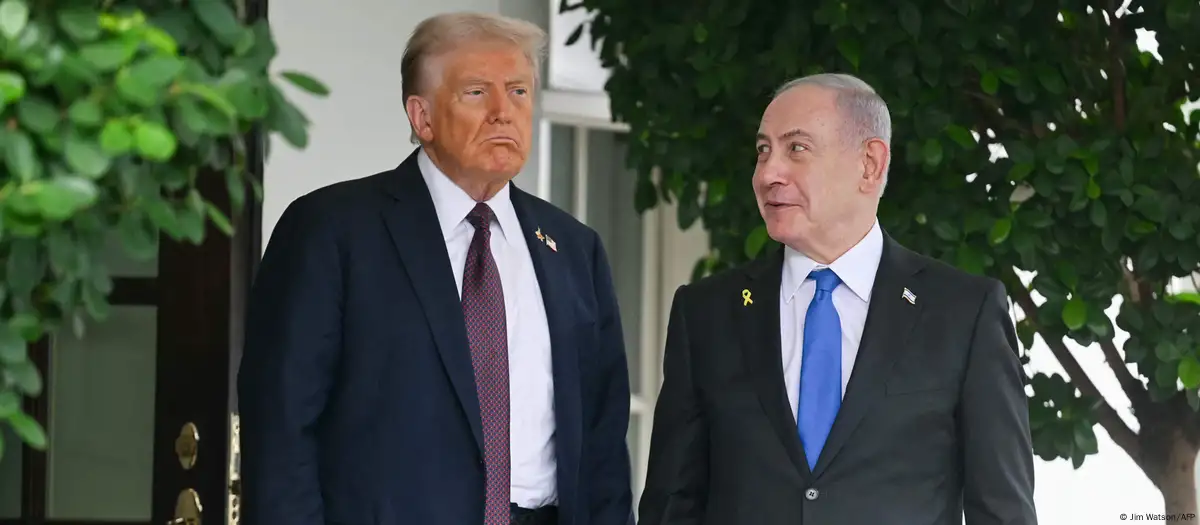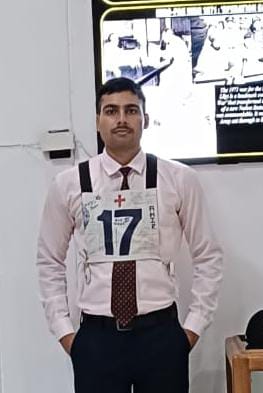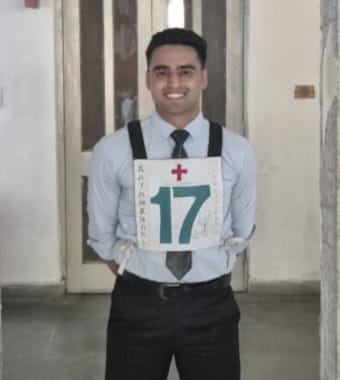On September 29, 2025, the U.S. White House unveiled a 20-point proposal, endorsed by Israel, aimed at ending the conflict in Gaza, releasing hostages, rebuilding Gaza, and setting a path toward stability. While Hamas has not yet formally accepted the plan, it represents one of the most detailed frameworks put forward in recent months. Below are the key points, followed by thoughts on potential strengths, challenges, and reactions.
What the 20 Points Say
Here are the main components of the 20-point plan, summarised:
- Deradicalization / Terror-Free Zone : Gaza should become a “deradicalized terror-free zone” that does not pose a threat to its neighbours.
- Redevelopment for Gaza’s People : Redevelop Gaza for the benefit of its people, who have suffered extensively.
- Immediate Ceasefire If Accepted by Both Sides : If both Israel and Hamas agree, the war is to end immediately. Israeli forces to withdraw to an agreed line, with military operations (air, artillery) suspended, and front lines frozen until a staged withdrawal can happen.
- Hostage Return Within 72 Hours : Within 72 hours of public acceptance by Israel, all hostages, alive and deceased, to be returned.
- Prisoner Exchanges by Israel : Once hostages are released, Israel will release: • 250 prisoners serving life sentences, and • around 1,700 Palestinians from Gaza detained since October 7, 2023 (including women and children) Also, for every Israeli hostage’s remains returned, Israel will release the remains of 15 deceased Gazans.
- Amnesty and Safe Passage for Hamas Members Who Disarm : Hamas members who commit to peaceful coexistence and decommission weapons will be given amnesty. Those wishing to leave Gaza will have safe passage to receiving countries.
- Immediate Humanitarian Aid : Upon acceptance, full aid into Gaza immediately: water, electricity, sewage; hospitals, bakeries; clearing rubble; opening roads.
- Unimpeded Aid Distribution Without Interference : Aid to flow through neutral international organizations (UN, Red Crescent, others not affiliated with either party). Rafah crossing to operate in both directions under same humanitarian accord as previous (January 19, 2025) agreement.
- Transitional Governance : Gaza to be governed temporarily by a technocratic, apolitical Palestinian committee responsible for day-to-day public services and municipalities.
- Establishment of Special Economic Zone : A special economic zone with preferential tariff/access arrangements to participating countries.
- No Forced Displacement : No one to be forced to leave Gaza; those who wish to leave can do so and return if they want. Encouragement for people who stay to help rebuild.
- No Role for Hamas in Governance : Hamas and other armed factions will have no role, direct or indirect, in Gaza governance. Includes destruction of all military/terror infrastructure, tunnels, weapons production. Demilitarization under independent monitors; weapons permanently placed beyond use via an agreed decommissioning process with international support.
- Regional Guarantee of Compliance : Regional partners will guarantee that Hamas and other factions fulfill obligations and that New Gaza poses no threat to neighbours or to its own people.
- International Stabilisation Force (ISF) : Creation of a temporary ISF to deploy immediately in Gaza. It will train vetted Palestinian police, help secure borders (with Israel, Egypt), prevent weapons smuggling, facilitate flow of goods and aid.
- Israeli Withdrawal, No Annexation : Israel will not occupy or annex Gaza. As ISF establishes stability, the Israeli Defense Forces (IDF) will withdraw in stages according to benchmarks/milestones, with only a temporary security perimeter until Gaza is fully secure from terror threats.
- Continued Progress Even If Hamas Delays or Rejects : If Hamas rejects or delays, many parts of the plan (aid operations, development, terror-free zones in areas handed over, etc.) will still proceed in those sectors controlled by ISF/other guarantors.
- Interfaith Dialogue / Changing Mindsets : Establish an interfaith dialogue process to emphasize tolerance and peaceful coexistence; change narratives among Palestinians and Israelis.
- Pathway Toward Self-Determination / Statehood : As redevelopment and Palestinian Authority (PA) reforms proceed faithfully, conditions may emerge for credible pathway to Palestinian self-determination/statehood, recognizing the aspiration of the Palestinian people.
- Dialogue Between Israel and Palestinians : The U.S. will help establish dialogue between Israel and Palestinians to agree on a political future built on peaceful coexistence and prosperity.
- Economic Development / Jobs / Investment : A comprehensive economic development plan, panel of experts to craft investments, job creation, attracting international investment to rebuild Gaza (“New Gaza”) as a place of opportunity.
What’s Significant / What’s New
- The plan is unusually detailed compared to many previous peace or ceasefire proposals. It doesn’t just demand hostages release or ceasefire-only steps; it combines military, humanitarian, governance, and economic dimensions.
- It excludes Hamas from future governance, which is a major shift. Governance is proposed to be technocratic and apolitical, overseen internationally, with a “Board of Peace” led by Trump, involving figures like Tony Blair.
- Staged withdrawal and demilitarization are also central; Israel is to withdraw gradually once conditions are met, but there will be a security perimeter until Gaza is deemed safe.
- The inclusion of economic redevelopment, job creation, and special economic zones shows the plan isn’t only about stopping violence but also rebuilding.
- Aid and humanitarian access are to be guaranteed through neutral actors and international monitoring.
Challenges, Criticisms, and Risks
While the plan has many supporters, it also faces significant hurdles and criticisms:
- Hamas Rejection or Demands for Changes: Hamas has not accepted the plan as of yet, and reports suggest its military wing opposes parts like disarmament or loss of control.
- Absence of Clear Path or Guarantees for an Independent Palestinian State: Critics note the plan offers only a potential, conditional path toward statehood, not a concrete guarantee.
- Implementation and Verification: Demilitarization, independent monitoring, weapon decommissioning—all require trust, strong institutions, regional cooperation. It’s uncertain if these conditions can be met.
- Humanitarian Situation Still Critical: Even if the plan is accepted, the current humanitarian crisis (millions displaced, infrastructure destroyed) means rebuilding will be huge, complex, and expensive. Delays or interruptions could worsen suffering.
- Political Opposition Within Israel: While Netanyahu has accepted the plan, his government includes hardliners who might oppose some terms (e.g. restraining Israel’s military operations sooner, limiting the role of armed forces).
- Regional Dynamics & International Reaction: Some neighboring or Muslim-majority countries are cautiously supportive but have raised concerns about omissions (rights, statehood, West Bank issues).
Potential Outcomes
If the plan is accepted and implemented, possible outcomes include:
- Immediate return of hostages and prisoner swaps, bringing relief to many families.
- A (if temporary) halt to active fighting, saving lives and reducing destruction.
- Rebuilding of major infrastructure, improved humanitarian conditions.
- A new governance model in Gaza, possibly reducing Hamas’s power, ideally leading to more moderate forms of administration.
- Regional stabilization, with involvement of Egypt, Arab states, international organisations.
If rejected, the plan may serve as a diplomatic benchmark, but conflict may continue, possibly with intensified military operations. The plan’s prospects hinge largely on Hamas’s willingness, Israeli cooperation in good faith, and international support.
Conclusion
Donald Trump’s 20-Point Plan for Gaza is one of the more expansive peace/ceasefire proposals in recent memory, combining political, military, governance, humanitarian, and economic objectives. It aims simultaneously to stop the war, release hostages, rebuild Gaza, exclude Hamas from governance, and provide a basis for future rights of self-determination.
The plan’s success will depend on acceptance by all parties, faith in its mechanisms (monitoring, demilitarization), coordination among regional and international actors, and rapid implementation of humanitarian and reconstruction efforts. Whether this becomes a turning point toward peace—or remains another plan on paper—is still very much to be seen.



















